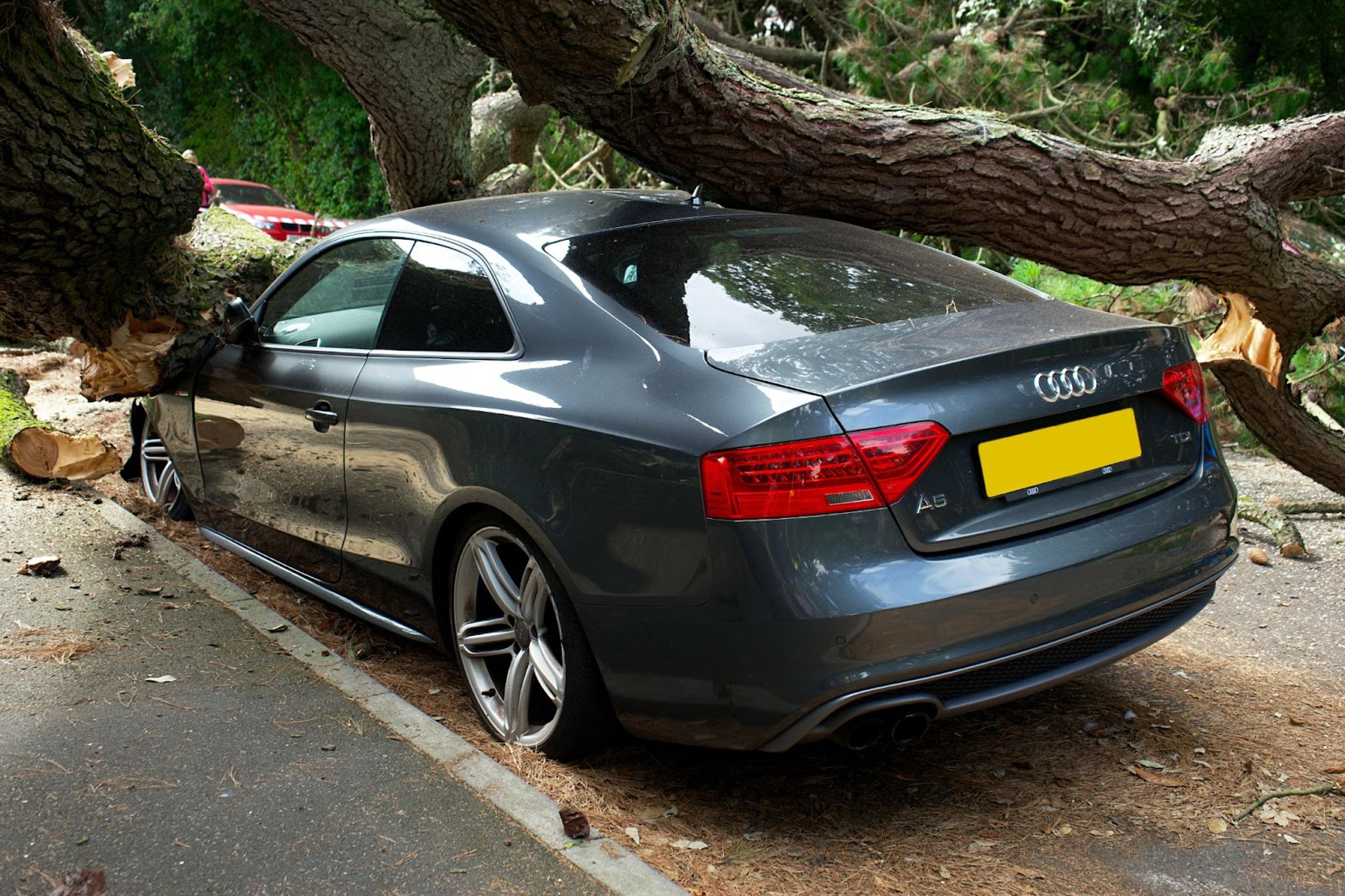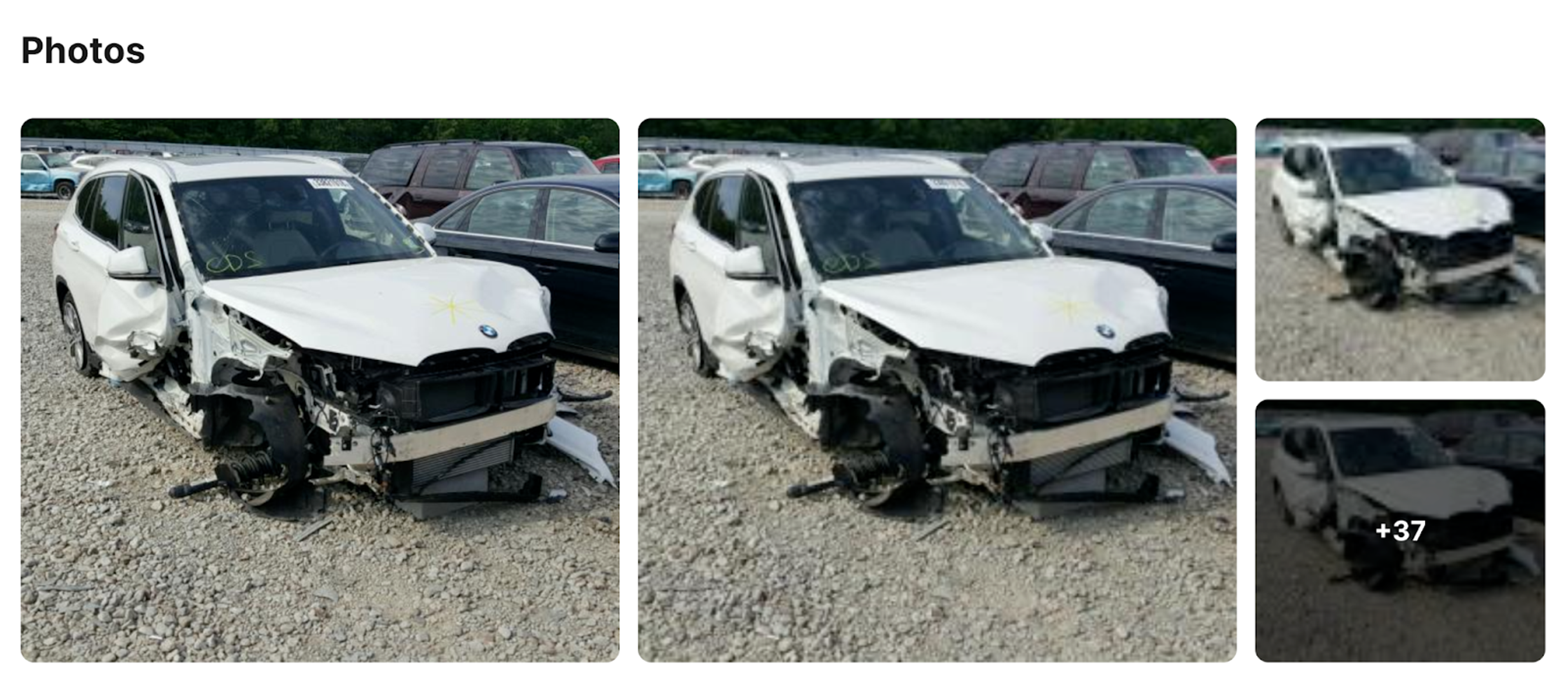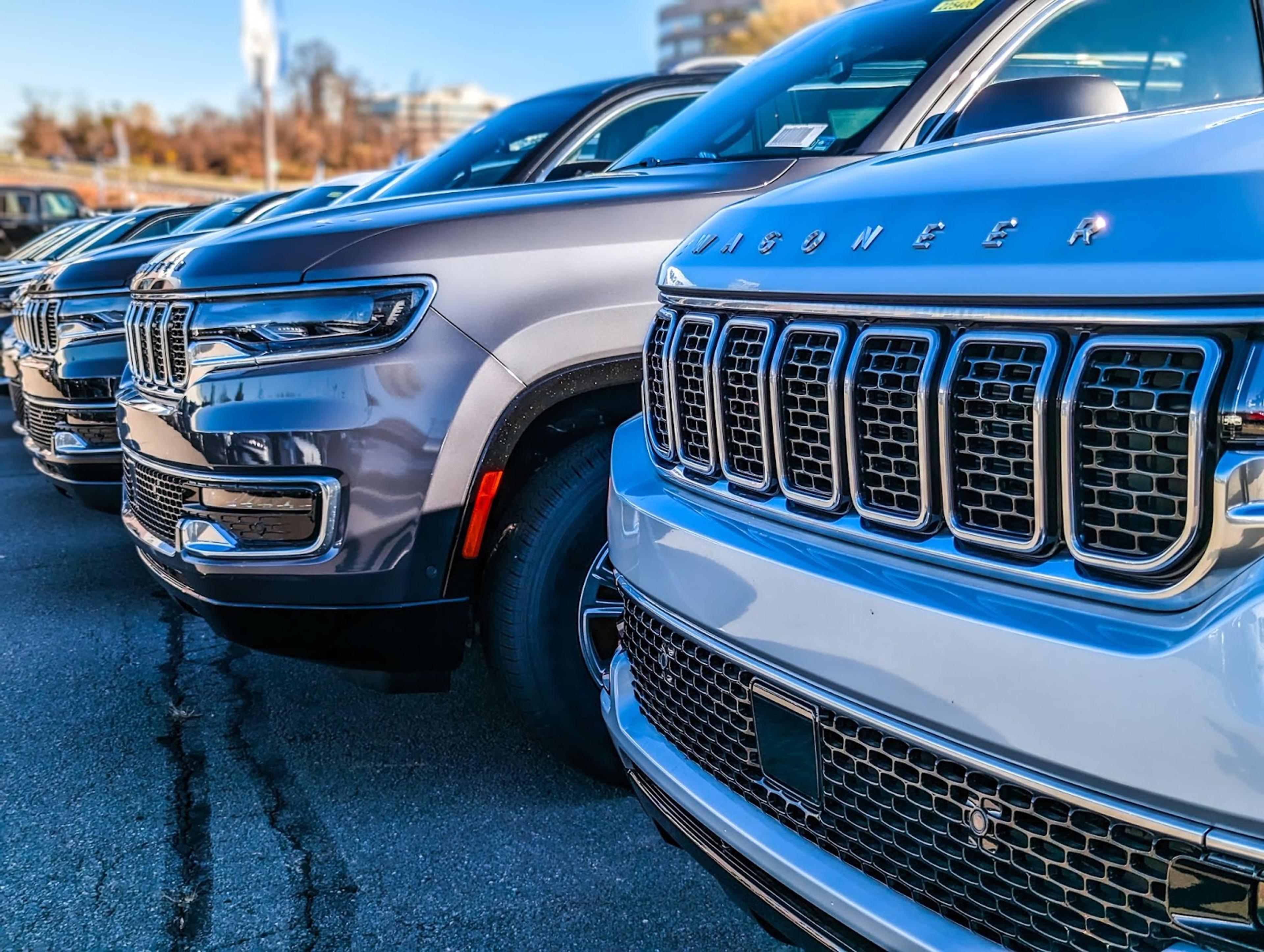10/09/2023
What can you learn about a used vehicle from the ad?

When you start looking for a new vehicle, you probably begin your search by skimming through used car ads. After all, it’s the easiest way to compare prices and get crucial information about your desired car.
However, picking a decent used vehicle from an ad may not be as easy as you may think. The selection is broad, so you need to know what to look for.
We've prepared a guide to help you navigate used vehicle ads and read them like a pro.

Looks can be deceiving!
Don't risk your safety - check it with carVertical first
What does an advertisement for a used car tell you?
An advertisement for a used vehicle may tell you about a car's:
- Condition
- Features
- Appearance
- Mileage
- Reasons for sale
As we at carVertical like to say, “every car has a story," and reading what the seller has provided can uncover some of that story.
Yet it's rarely the whole story! If a vehicle has past damages, mileage discrepancies, or defects, this will drive down the price. As a result, people often keep certain information about a car’s history to themselves, hoping to get more money than a vehicle is actually worth.
How to read a car ad
After analyzing at least a few car advertisement examples, you’ll quickly notice that no two cars are the same. You may end up checking thousands of ads over a period of months before finding what you’re looking for. This especially applies to those living in areas with a low used car supply.
Vehicle specifications
The primary function of an old car advertisement is to inform potential buyers about a car’s technical specifications and other objective details: make, model, year, engine type, mileage, etc. This way, you can filter out vehicles you’re not interested in and choose your preferred engine or body type.
When skimming through vehicle specifications, always consider your needs and driving habits. If you mostly drive in the city, you probably don’t need a Skoda Superb with all-wheel-drive – the regular version will do just fine (while being more fuel efficient).
One thing to note is that the same car model often comes with a few different engines, and each version may differ in terms of reliability. Knowing the common issues of a particular engine / model version can help you skip the ones with a bad reputation among owners.
Beyond the specs, one of the most important things is how many miles a car has driven. A 5-year-old vehicle can either have 20,000 miles or 200,000 miles on the odometer. These two cars would likely be very different, and you'd probably prefer the latter.
Price comparison
Evaluating the asking price of a used car can be tricky and require some homework. It’s not enough to compare prices of the same model on classified ad portals. You have to dig deeper and consider a car’s equipment list, condition, and technical specifications.
If two Volkswagen Passats produced in the same year cost differently, this may not necessarily mean that one of the sellers is trying to make more money. Maybe one of the cars has rich equipment, low mileage, new tires, and a recently changed timing chain belt.
Take your time to do thorough research to understand how a specific model is priced and what affects its value. Finally, if the price is too good to be true – walk away.
Visual elements

Car photos and videos can tell you a lot about its past – if you know how to read them. Scratches and bumps are the easiest to notice and could be a good starting point when negotiating a lower price.
Try to see if the gaps between panels seem too large (e.g. on the doors, hood, and trunk). If a car has been in a severe accident and some parts have been changed, you can often notice misalignment, suggesting that this vehicle may have a story to tell.
A repaired area could have a slightly different shade of paint than the rest of a car, so closely inspect its bodywork. Take a look at the headlights in the photo and evaluate if they both look the same. Sometimes, you can tell that one of the headlights was changed because the older one appears dim and the new one stands out. Do this for the tail lights as well.
A car’s interior can also reveal its secrets. If a 15-year-old vehicle has a new steering wheel, seats, and pedals, this may suggest more actual wear and tear than expected.
Vehicle identification number
Some used car ads contain a VIN number, which allows you to easily check a vehicle’s history. This way, you can learn a lot about a car without wasting your time and meeting the seller in person.
For instance, our vehicle history report provides a detailed overview using data collected from over 900 databases. By checking a vehicle’s VIN, you can learn about its damages, mileage rollbacks, ownership changes, maintenance, safety recalls, and more. If the seller is hiding something about their car, a history report is a good way to reveal this.


However, not every used vehicle has a VIN in its ad. Don’t hesitate to contact the seller and ask them to provide it. If the seller refuses to share a VIN, this is a huge red flag.
When you meet the seller, check if the provided VIN matches the one on different parts of the car, as well as the documents. If you notice that VINs don’t match, this may indicate that the car is stolen, or has been seriously damaged.

Check your VIN
Avoid costly problems by checking a vehicle's history. Get a report instantly!
Analyzing a vehicle's condition from an ad

Maintenance and repair history
Sellers often mention recent repairs or upgrades in the ad so potential buyers can understand the car’s condition better. Mentioning that a vehicle comes with a set of new tires, brake pads, or a recent oil change can suggest the owner took good care of their car.
Some owners even go so far as to name all the issues a car has, which may help you decide if you want to chat with the seller or skip the vehicle altogether.
Signs of wear and tear
- High mileage. A high mileage usually indicates significant wear and tear, potentially leading to mechanical issues and increased maintenance needs.
- Exterior damage. Mentions of dents, scratches, rust, or faded paint in the ad may suggest that the car isn't in the best condition.
- Condition of the interior. Torn upholstery, a dysfunctional air conditioning system, or general wear and tear could indicate overall neglect, which may manifest in other areas too.
- Modified parts. If the ad mentions aftermarket modifications, like a custom exhaust system or suspension, this could mean more wear (but it could also mean the opposite).
- Multiple owners. A car with multiple owners in a short time may indicate various issues.
- Incomplete information. An ad that lacks detailed information about a car's history, maintenance, or condition could indicate that the seller is trying to hide potential problems.
- Low price. Sometimes, a car’s price may seem too good to be true. This can indicate underlying issues or extensive wear.
Legal and administrative details you can get from a car’s ad

Number of owners and accidents
Car ads may contain the number of previous owners. Fewer owners (like fewer accidents) usually means fewer problems.
Sincere sellers usually specify what kind of damages a car has suffered, which may help potential buyers decide if they want such a vehicle. A replaced bumper isn’t a big deal. However, if the entire front of the car was destroyed and recreated from scratch, you wouldn’t want it, as it would probably be unsafe to drive.
Even if the ad doesn’t contain any information about previous owners and accidents, you can easily get some of that information by performing a VIN lookup. It’s also worth comparing the statements in the ad with the information found in a history report. Sellers lie, and you want to do everything to mitigate the risk of being fooled.
Warranty and certification
Cars with valid warranties cost more, as they provide owners with peace of mind. In case something happens to a vehicle, you’ll be covered. This is probably one of the most important selling points and sellers emphasize this information. If the warranty isn’t mentioned, most likely, a car just doesn’t have one.
Many cars up to 5 years old come back to the dealership once their lease ends or as a trade-in. Only certified dealers are allowed to sell pre-owned vehicles. These cars undergo an inspection to ensure they’re in good working condition and won’t cause trouble to the new owner.
In classified ad portals, you can filter out cars with a warranty. Just note that such vehicles usually cost more than those sold by private sellers.
Legal compliance
Cars must periodically pass technical inspections. Information from these inspections can tell you a lot about a vehicle. As such, it should also appear in a vehicle ad. If a car’s technical inspection expires in 1 month, you’ll need to invest time and money to pass it. If a car has just passed the inspection, it will cost more than a model with only a couple of months of inspection left.
We recommend checking a car’s inspection date, as some older cars are often sold without a valid technical inspection. These cars are mostly in bad condition and are meant for parts.
Potential red flags in used car ads

When browsing classified ad portals, you have to be cautious and notice common red flags. Since not every seller is necessarily a good guy, being able to read between the lines will mitigate the chances of buying a lemon.
- Must sell ASAP. A sense of urgency may mean the car has problems and the seller is hiding something.
- Serious buyers only. The seller might be aware of issues and want to avoid negotiations that may highlight those problems.
- Recent repairs. Not necessarily a bad thing, but it’s worth investigating further to ensure that the repairs were done correctly and to a high standard.
- Custom modifications. This can indicate non-original modifications that may affect the car's authenticity or resale value.
- Recently repainted. It may suggest that the car has previously had rust issues that were addressed but could resurface.
- Cold start can be tricky. Hints at potential starting or idling problems, especially during cold weather.
- Low mileage for its age. It can indicate periods of inactivity (which might lead to mechanical issues) or a mileage rollback.
- Great project car. Indicates that the car requires significant repairs, restoration, or maintenance work. Good, if this is actually what you're looking for.
How to buy a car from an ad
Buying a car from classified ad portals allows you to view dozens of different vehicles, so you can get a better understanding of the whole market. Follow these tips to have a worry-free car-buying experience:
1.Filter out cars you’re not interested in
2.Carefully read the description
3.Check the car’s VIN
4.Contact the seller and ask questions about the vehicle
5.Check all the documents
6.Perform a test-drive
7.Take the car for an inspection at an auto shop
Purchasing a car from an ad carries inherent risks, but taking precautions can lead to a successful purchase. Buyers can mitigate potential pitfalls and ensure a positive outcome by conducting thorough research, inspecting the vehicle diligently, verifying its history, and seeking professional advice.
